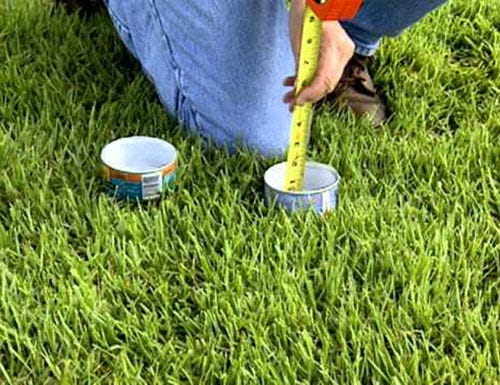May Day (May 1) marks the end of the uncomfortable winter half of the year in the Northern Hemisphere. It has traditionally been an occasion for popular celebrations.
The day was the traditional first day of summer in many pre-Christian European pagan cultures.
Worldwide, the holiday has been celebrated with several horticultural presentations. Small baskets have been left anonymously on neighbor’s doorsteps. May Day is Lei Day in Hawaii. In Germany, a tree wrapped in bright colored streamers was once delivered to a love interest.
Modern day May Day ceremonies vary greatly because May 1st also commemorates the fight for the eight-hour work day. In 1958, the U.S. Congress designated May 1 as Loyalty Day.
Calibrating water use


In North Florida, the month of May typically begins the dry season. So, while everyone is thinking about planting new flowers and trees, they should also be focusing on keeping the plants watered. Those with the forethought to have installed rain harvesting devices this winter, when the rain was plentiful, will be well equipped to deal with the upcoming dry season.
For those who didn’t, it may mean that May Day will be a day of labor, rather than an opportunity to exchange flowers.
Calibrating your sprinkler system means figuring out how long you need to run your sprinkler system to apply the correct amount of water.
In most Florida soils, the correct amount is 1/2 to 3/4 of an inch of water. This rate varies depending on your location in the state. Heavier clay soils, such as in North Florida and the panhandle, may only need the 1/2-inch rate. In sandy soil, which doesn't hold water as long, you may need to apply the 3/4-inch rate.
Set out five to 10 coffee or tuna fish cans (any straight-sided can will do) around your lawn and landscape. If you have an in-ground irrigation system with multiple zones, place the containers in one zone at a time.
If properly designed, the sprinkler system has separate zones for landscape areas and the lawn. Scatter the cans at random within the zone. Repeat the procedure in every zone, because there may be differences in how uniformly water is applied in each zone.
If you use a hose-end sprinkler to water your turf, place the cans in a straight line from the sprinkler to the edge of the watering pattern. Space the containers evenly.
Turn on the sprinkler system for 15 minutes. Then use a ruler to measure the depth of water in each container. The more precise your measurement, the better your calibration will be.
Find the average depth of water collected in the containers. To do this, add up the depths in the different containers and divide that number by the number of containers. This will give you the correct rate in inches per 15 minutes.
The length of time can be adjusted to enable the system to deliver 1/2 to 3/4 of an inch of water at each irrigating event.
Anything less leads to shallow weak root systems. Anything more is wasting water and adding to non-point source water pollution.
Then select the days that the system will run so that one inch of water is delivered every 5-7 days. Don’t forget to check the rain shut-off device and the rain gauge. Even in May we get a random downpour.
Calibrating your system helps you save water and money, and protects your grass and plants from disease.
For more information about this and many other gardening topics contact the Extension office, at 850-689-5850, or at 3098 Airport Road, Crestview.

Sheila Dunning is an agent at the University of Florida's Institute of Food and Agricultural Sciences Extension office in Crestview.
This article originally appeared on Crestview News Bulletin: EXTENSION CONNECTION: Set water usage to save money, prevent disease
